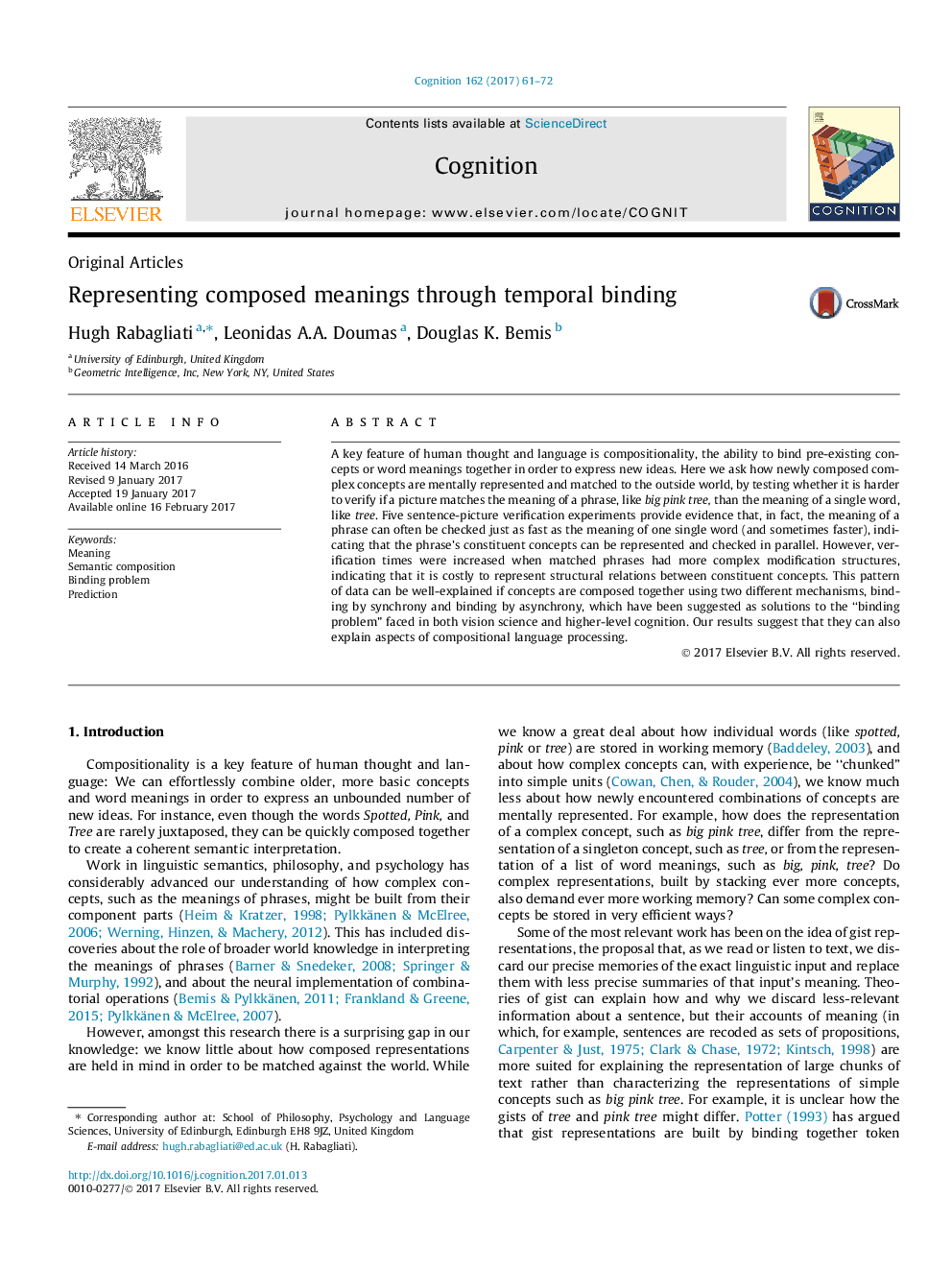| کد مقاله | کد نشریه | سال انتشار | مقاله انگلیسی | نسخه تمام متن |
|---|---|---|---|---|
| 5041661 | 1474105 | 2017 | 12 صفحه PDF | دانلود رایگان |
- How do we mentally represent composed meanings, like “big pink tree”?
- 5 sentence picture verification experiments support a temporal binding account.
- Composed concepts are easier to represent than matched lists of words (pink, tree).
- Simple composed concepts (pink tree) are represented as easily as single words.
- But structural relationships between concepts (e.g. scope) are costly to represent.
A key feature of human thought and language is compositionality, the ability to bind pre-existing concepts or word meanings together in order to express new ideas. Here we ask how newly composed complex concepts are mentally represented and matched to the outside world, by testing whether it is harder to verify if a picture matches the meaning of a phrase, like big pink tree, than the meaning of a single word, like tree. Five sentence-picture verification experiments provide evidence that, in fact, the meaning of a phrase can often be checked just as fast as the meaning of one single word (and sometimes faster), indicating that the phrase's constituent concepts can be represented and checked in parallel. However, verification times were increased when matched phrases had more complex modification structures, indicating that it is costly to represent structural relations between constituent concepts. This pattern of data can be well-explained if concepts are composed together using two different mechanisms, binding by synchrony and binding by asynchrony, which have been suggested as solutions to the “binding problem” faced in both vision science and higher-level cognition. Our results suggest that they can also explain aspects of compositional language processing.
Journal: Cognition - Volume 162, May 2017, Pages 61-72
